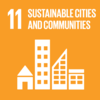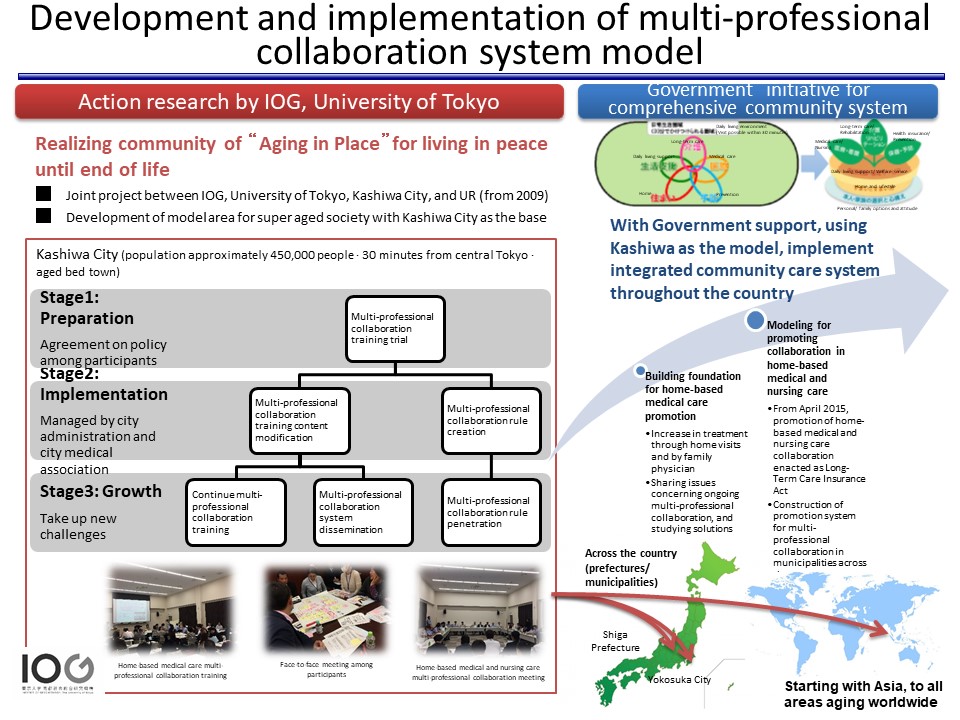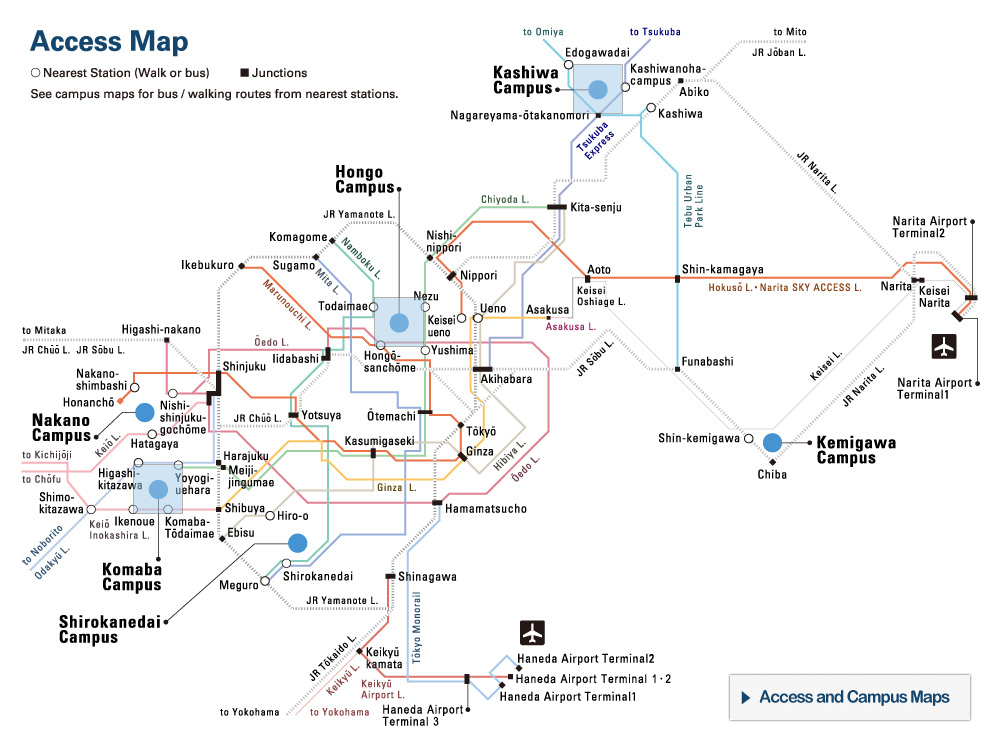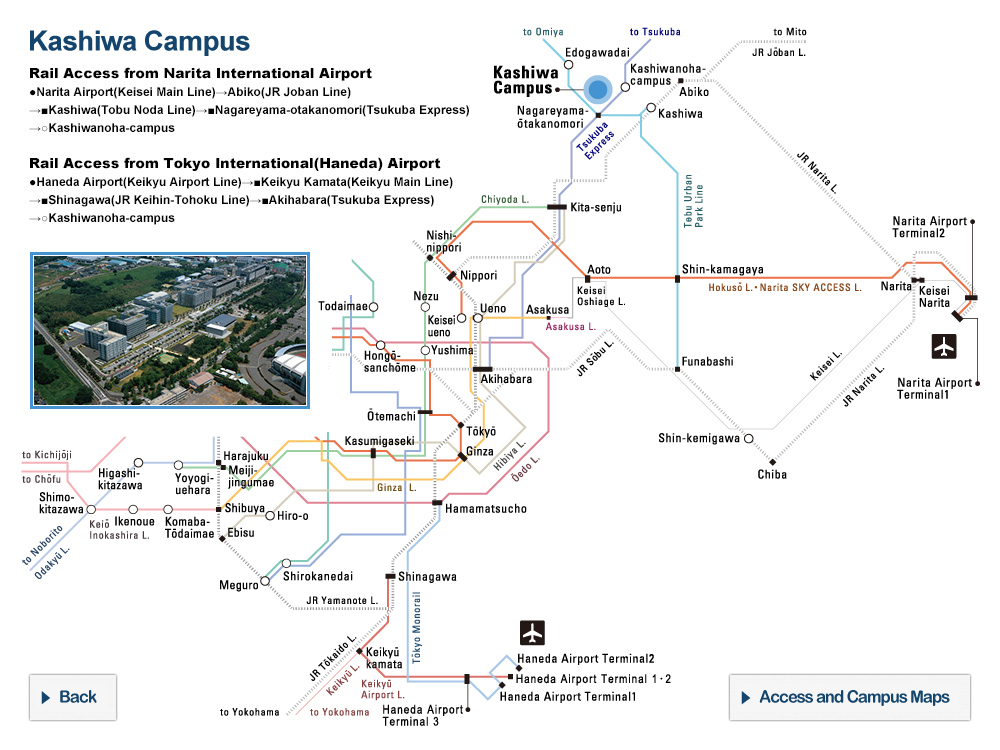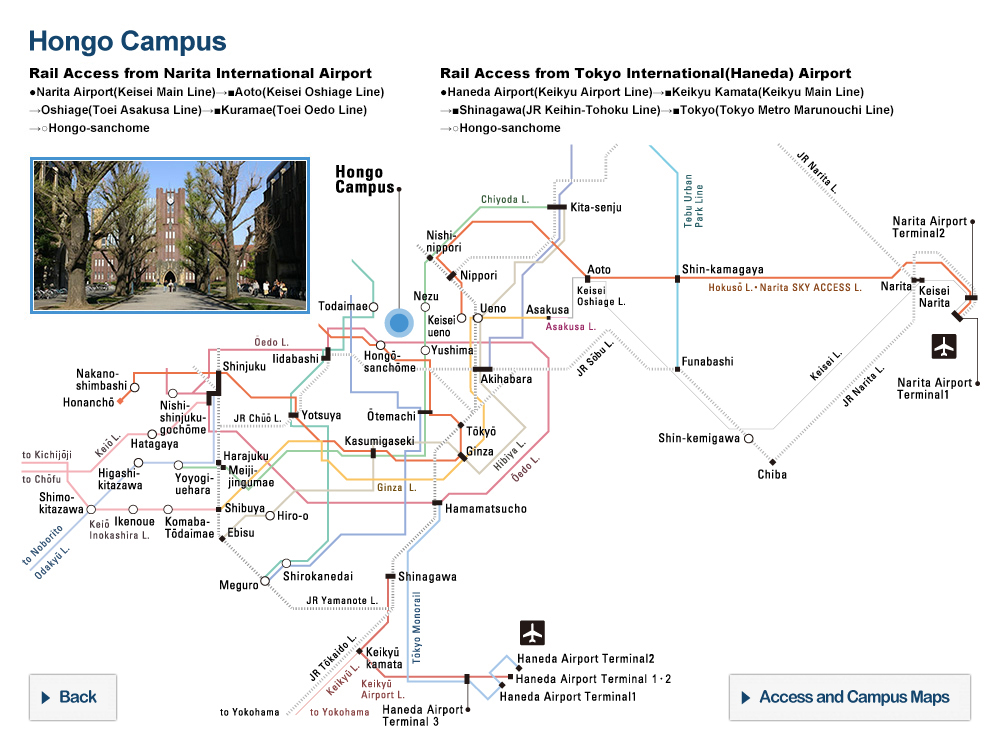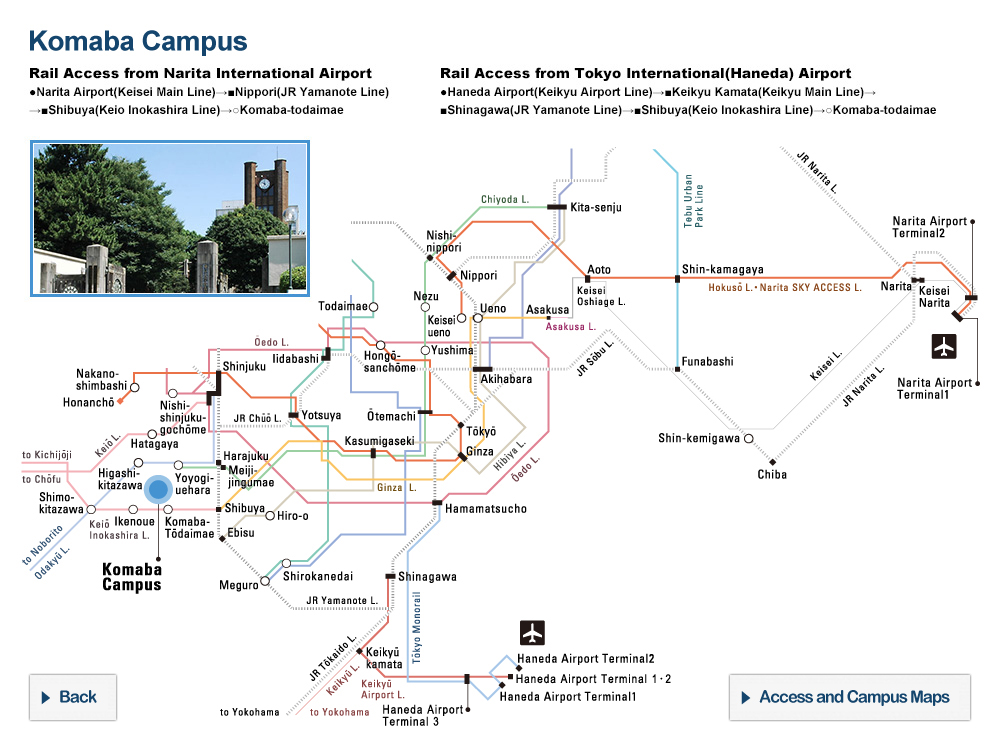Creating Integrated Community Care System for Achieving “Aging in Place”


Katsuya Iijima
Institute of Gerontology
Director/Professor
Extended life expectancy has ushered in an era of 100-year life span. To help the elderly to sustain active daily living until the end of their life, it is essential to create a society in which integrated community care, including home-based care, is firmly established. Building such a society by 2025, when Japan’s baby-boomers will reach 75 years of age, is a common issue throughout Japan, and the time available for us is limited. Therefore, it is imporatnt to construct a truly integrated community care system, including medical care, with a municipal government playing a central role. In addition, a city’s medical association, which facilitates community medical care, will act together as the core of the system.
Since 2009, the Institute of Gerontology, the University of Tokyo, has worked to create a model for promoting collaboration in home-based medical and nursing care in cooperation with Urban Renaissance Agency (UR) in Kashiwa City, Chiba Prefecture. The city falls within the Greater Tokyo Area, a region surrounding Japan’s capital, where the population of elderly people will continue to rise in the future. This model was developed with the basic understanding that the Kashiwa city’s administration will provide the foundation on which people from various professions can collaborate together and that it is indispensable to involve the Kashiwa City Medical Association in creating a sytem for collaboraiton among many professional associations.
Kashiwa City's home-based medical and care system was adopted as a Home-based Healthcare Collaboration Base Project in fiscal year 2011 and 2012, and as a Home-based Healthcare Promotion Project from fiscal 2013 under the medical policy measures of the Ministry of Health, Labour and Welfare. As such, this program has become Japan’s nationwide "multi-professional collaboration system model." Based on the implementation and results of these projects, the system was implemented under the Long-Term Care Insurance Act from fiscal year 2015.
According to estimates of population aging globally, especially in Asia, some countries have rapidly-aging populations that are larger than Japan’s. It is expected that the "model of multi-professional collaboration system" developed in Japan --- a leader among aging societies worldwide --- will eventually serve as a role model for such countries around the world.
Since 2009, the Institute of Gerontology, the University of Tokyo, has worked to create a model for promoting collaboration in home-based medical and nursing care in cooperation with Urban Renaissance Agency (UR) in Kashiwa City, Chiba Prefecture. The city falls within the Greater Tokyo Area, a region surrounding Japan’s capital, where the population of elderly people will continue to rise in the future. This model was developed with the basic understanding that the Kashiwa city’s administration will provide the foundation on which people from various professions can collaborate together and that it is indispensable to involve the Kashiwa City Medical Association in creating a sytem for collaboraiton among many professional associations.
Kashiwa City's home-based medical and care system was adopted as a Home-based Healthcare Collaboration Base Project in fiscal year 2011 and 2012, and as a Home-based Healthcare Promotion Project from fiscal 2013 under the medical policy measures of the Ministry of Health, Labour and Welfare. As such, this program has become Japan’s nationwide "multi-professional collaboration system model." Based on the implementation and results of these projects, the system was implemented under the Long-Term Care Insurance Act from fiscal year 2015.
According to estimates of population aging globally, especially in Asia, some countries have rapidly-aging populations that are larger than Japan’s. It is expected that the "model of multi-professional collaboration system" developed in Japan --- a leader among aging societies worldwide --- will eventually serve as a role model for such countries around the world.
Research collaborators
- Kashiwa City
- Urban Renaissance Agency (UR)
- Fukui Prefecture
- Urban Renaissance Agency (UR)
- Fukui Prefecture
Related publications
- Igarashi A, Yamamoto-Mitani N, Yoshie S, Iijima K. Patterns of long-term care services use in a suburban municipality of Japan: a population-based study. Geriatr Gerontol Int. 2017;17(5):753-759.
- Kimura T, Yoshie S, Tsuchiya R, Kawagoe S, Hirahara S, Iijima K, Akahoshi T, Tsuji T. Catheter replacement structure in home medical care settings and regional characteristics in Tokyo and three adjoining prefectures. Geriatr Gerontol Int. 2017;17(4):628-636.
- Kimura T, Yoshie S, Tsuchiya R, Kawagoe S, Hirahara S, Iijima K, Akahoshi T, Tsuji T. Cooperation between Single-Handed and Group Practices Ensures the Replacement of Gastrostomy Tubes and Tracheal Cannulas in Home Medical Care Settings. Tohoku J Exp Med. 2017 Mar;241(3):189-199.
- Institute of Gerontology, The University of Tokyo, Implementing ‘Integrated Community Care System’ Practical Guidelines of Multi-Professional Teamwork for Home Medical Care. University of Tokyo Press, 2014.
- Kimura T, Yoshie S, Tsuchiya R, Kawagoe S, Hirahara S, Iijima K, Akahoshi T, Tsuji T. Catheter replacement structure in home medical care settings and regional characteristics in Tokyo and three adjoining prefectures. Geriatr Gerontol Int. 2017;17(4):628-636.
- Kimura T, Yoshie S, Tsuchiya R, Kawagoe S, Hirahara S, Iijima K, Akahoshi T, Tsuji T. Cooperation between Single-Handed and Group Practices Ensures the Replacement of Gastrostomy Tubes and Tracheal Cannulas in Home Medical Care Settings. Tohoku J Exp Med. 2017 Mar;241(3):189-199.
- Institute of Gerontology, The University of Tokyo, Implementing ‘Integrated Community Care System’ Practical Guidelines of Multi-Professional Teamwork for Home Medical Care. University of Tokyo Press, 2014.
Contact
- Email: miyahara[at]iog.u-tokyo.ac.jp
※[at]=@






